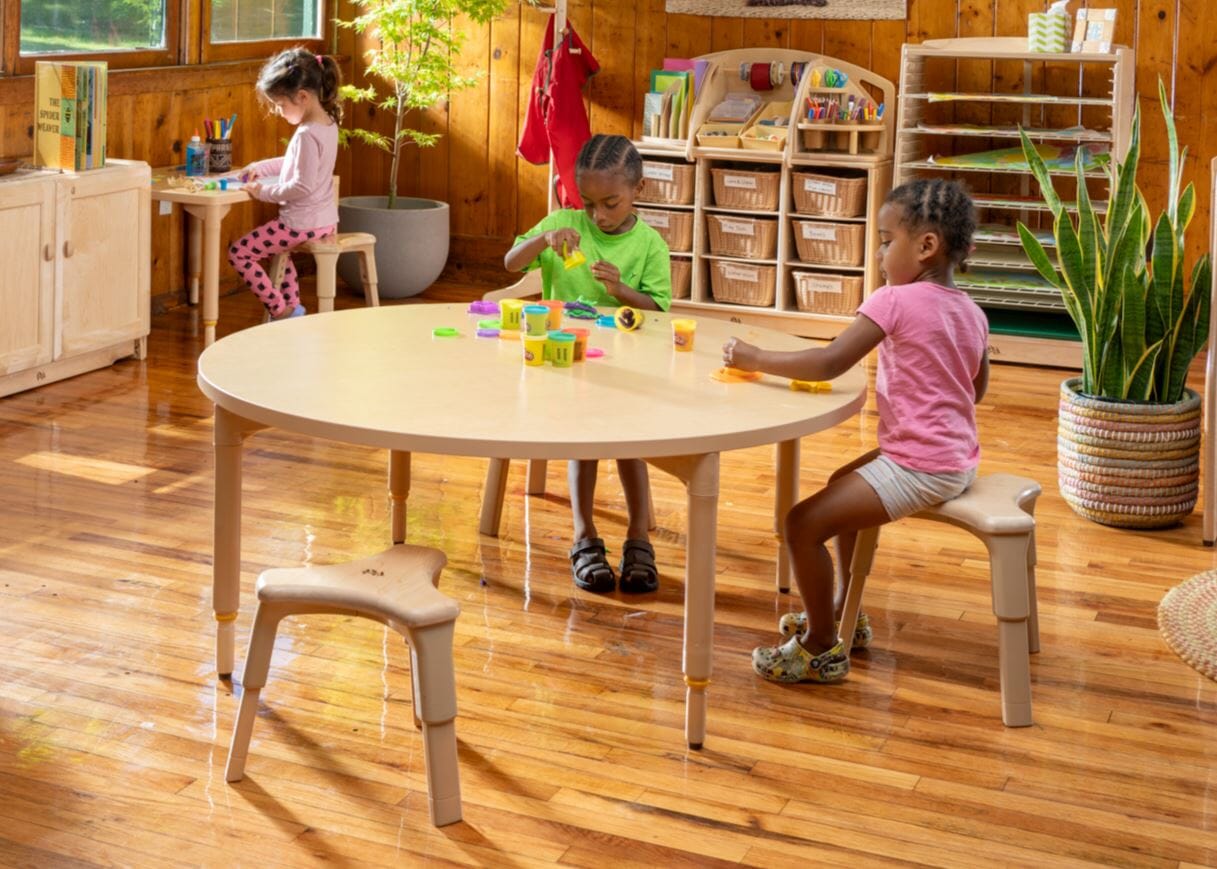It is a common belief that children learn best when sitting still, but is it true? So often sitting still is equated to attentive learning.
But movement is more than just a way for children to burn off energy—it's an integral part of cognitive development in early childhood education.
Rae Pica – a children's movement specialist – in a recent blog post wrote that forcing children to sit still could actually prevent them from focusing on learning and expanding their variety of skills:
“Just like any other young animal, young children are born to move! When we remove that option, they become restless and frustrated. Restless, frustrated children fidget. They act out. When they’re told over and over again to sit still, they begin to feel like failures—at three or four years old—because they can’t do what an important adult is asking them to do. When a teacher repeatedly sends home notes with a three-year-old child because he’s not able to sit still...what happens to his natural joy?”
from the blog post “Myth: Children Learn by Sitting” July, 2024
Indeed, adapting an early years learning space to support a child’s natural inclination to move can significantly improve their learning experiences and outcomes.
Introducing Grow-Right Stools
The Grow-Right Stools from Community Playthings are a new seating solution that address the need for flexible active seating in a learning environment. They allow for a range of motion while supporting an engaged posture for an enriching and focused learning experience.
The stools’ unique shape supports the subtle but constant movement of children arising from the body’s constant drive for balance.
Children can anchor themselves with feet firmly planted, helping them focus on what they’re doing, rather than focusing on trying to maintain core stability. The triangulation between the child’s feet and the sit or sitz bones (or the ischial tuberosity if you want to be super nerdy!) supports this stability.
Plus, these durable stools are right-sized, and easily gripped by little hands for children to move and stack themselves, promoting good habits while getting important big muscles working. The compact and stackable design minimizes obstructions in the classroom – just tuck them under a table -- or to reconfigure your space for an exercise break or other activities.
As the science writer Annie Murphy Paul in the widely acclaimed, best-selling book The Extended Mind (2021), argues (citing copious evidence) that physical activity improves brain function. She concludes:
“…moderate intensity exercise experienced for a small length of time increases humans’ ability to think both during and immediately after the activity.”
Developmentally Appropriate
Careful considerate design of the Grow-Right Stools encourages best seating positions with comfort:
- Uniquely shaped top allows the child’s legs to fall away, opening the angle between torso and legs. This prompts children to shift their weight relieving pressure points, easing discomfort from prolonged sitting.
- Waterfall edge increases blood flow to the lower body and prevents “squishing” of the body cavity that restricts circulation.
- Sitting upright strengthens core muscles and aids in whole body development.
Available in 4 sizes appropriate for children from ages 1- 6, each stool has quick height adjustment for easy individualization.
Plus the Grow-Right Stools are quality made by Community Playthings with maple hardwood, and other proven materials and finishes. So, you know they are designed to withstand the rigors of a busy classroom environment, backed by a lifetime warranty.
The Grow-Right Stools are shipping now in two sizes
- 25cm - 30cm (10-12”)
- 30cm - 36cm (12-14”)
Two more sizes 20 - 25cm (8-10”) and 36 – 41 cm (14-16”) will be available in October of 2024.
References
Pica, Rae. 2024. “Myth: Children Learn by Sitting.” Community Playthings. https://www.communityplaythings.com/resources/articles/myth-children-learn-by-sitting
Carter, Danielle. 2019. "The Importance of Crossing Midline." Kidspeak. November 22. https://kidspeakltd.com/importance-crossing-midline/
Paul, Annie Murphy. 2021. The Extended Mind: The Power of Thinking outside the Brain. New York: Houghton Mifflin Harcourt.












